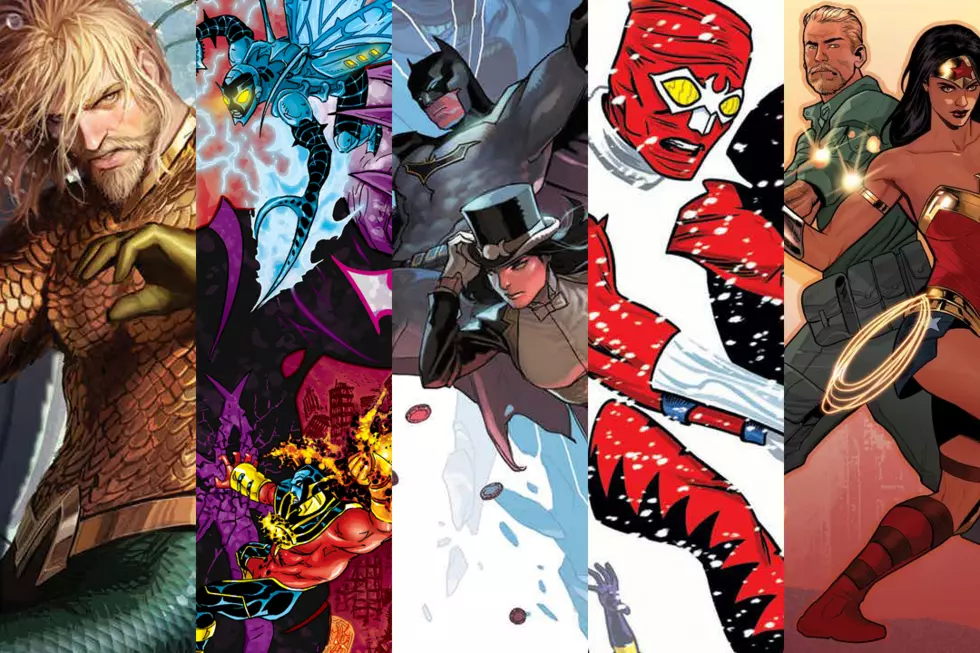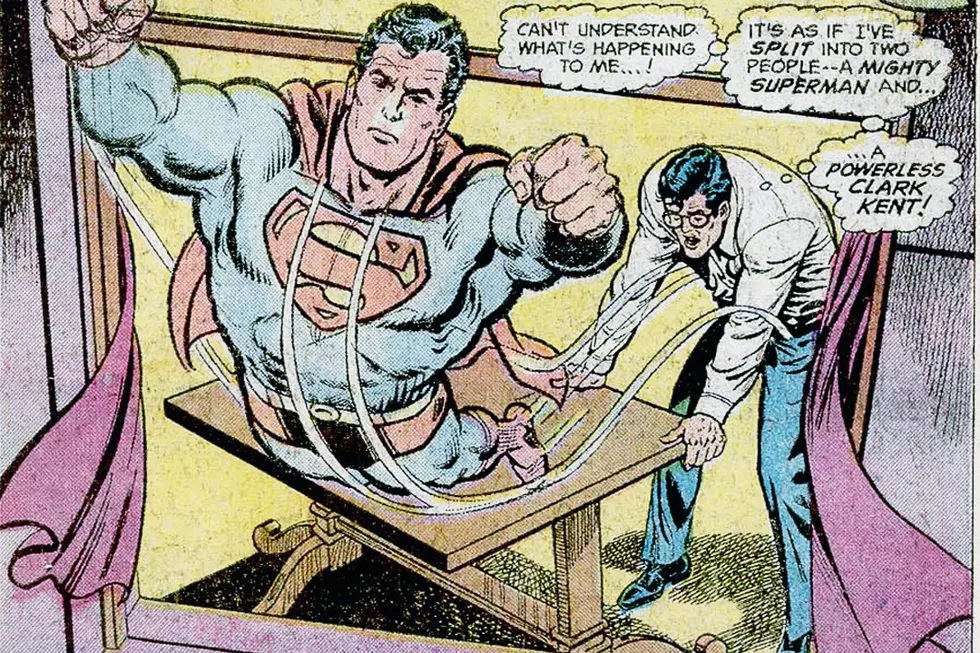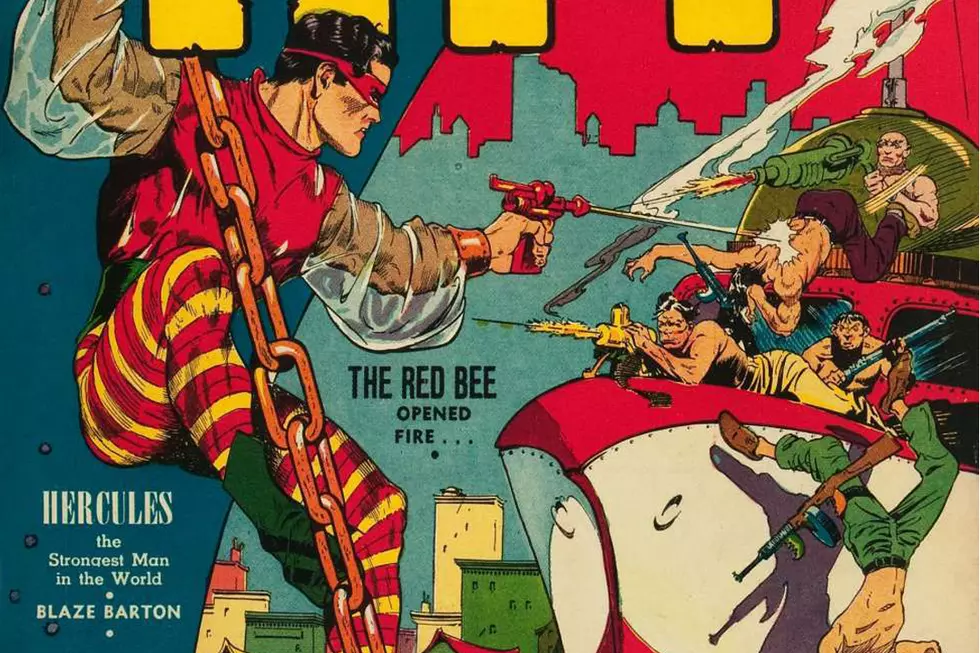
Lost in Transition: The Legion of Super-Heroes and the Uneven Footsteps of Progress
Hi, I’m Charlotte Finn. I’m a lifelong comics fan and last year, I admitted to myself that I’m transgender.
Coming out as transgender means reassessing a lot about your life, your place in the world, and what that world’s been telling you about yourself before you even realized who you really were. In this occasional series, I’m going to be applying that reassessment to comics that feature people like me, or close to being like me, and look them over with a fresh set of eyes.
Are they good? Are they bad? Are they somehow both, at the same time? In this series, I’ll offer my thoughts.
Legion of Super-Heroes Volumes 2 through 4 (July 1992)
Specifically Focusing On: Legion of Super-Heroes Volume 4 #31
Writers: Keith Giffen, Tom & Mary Bierbaum
Pencils: Colleen Doran, Curt Swan
Inks: Al Gordon, Karl Kesel
Letters: John Workman
Colors: Tom McCraw
Editor: Michael Eury
Publisher: DC Comics
Note: All art taken from this LSH vol. 4, #31 unless otherwise specified.
In Teenagers from the Future: Essays on the Legion of Super-Heroes from Sequart (a book that features contributions from past and present ComicsAlliance writers such as Timothy Callahan and Chris Sims) there is a lengthy essay by Alan Williams touching on the history of the Legion of Super-Heroes and LGBTQ issues. At a time when most of comics was tiptoeing around the notion of gay, bi and lesbian people existing – much less being portrayed well – Legion was making text out of subtext with characters such as Shrinking Violet and Lightning Lass, and doing it during one of the series' most creatively daring periods.
But Alan Williams also touches on the character of Shvaughn Erin, and that character's fate illustrates how a step forward for some can leave others behind.
In Legion of Super-Heroes Volume 2 Annual #1 Element Lad, AKA Jan Arrah, meets a member of the Science Police who became a liaison to the Legion of Super-Heroes. Over the course of the series, the character --- Shvaughn Erin --- becomes a romantic interest for Element Lad. Fairly standard stuff for a team comics melodrama, which Legion of Super-Heroes is.
But it's also a series and a property with a reputation for a passionate fanbase, even compared to other comics fans – not exactly a group known for their "hey, it's all gonna work out" attitude – and Element Lad paired with Officer Erin contradicted long-standing speculation that Element Lad was gay, speculation that fans-turned-pros wanted to establish as canon. It all comes to a head in Legion of Super-Heroes Vol. 4 #31, where we find out that Shvaughn is really Sean.
On a technical level, it's drawn by Curt Swan and Colleen Doran, so of course it looks gorgeous. What stands out most about the art in this issue, specifically, is the running subplot with the cloned younger Legionnaires, who all look like they walked out of a 1950s issue of Adventure Comics. Tom McCraw's colors especially shine here, showing how out of place the younger Legionnaires are in the present day, on an Earth that the Dominators have… dominated.
Doran and Swan make great use of the nine-panel grid to keep the story feeling claustrophobic, denoting the pressures all the characters are under, as under a Dominator-controlled Earth, drugs are hard to come by. Without a drug that Shvaughn takes regularly, called ProFem, Shvaughn is revealed to be a gay man named Sean, who became infatuated with a younger Element Lad and came from a world where it's heavily implied that same-gender relationships are outlawed.
So Sean took a drug named ProFem that, through the magic of the comic book science of "it's the future, okay," gives the imbiber traditionally feminine features, and goes to hook up with Element Lad. Element Lad finds out about this, and explicitly tells Sean that he doesn't care what gender Sean is, firmly establishing Element Lad as bisexual. Which is not the same thing as being gay, of course, but still a step towards better gay/bi representation. Better trans representation is another story.
This issue caused an immensely divided reaction, and it's not hard to see why. If you're a gay or bisexual man, having a character in a comic book come out and say that they're like you can be an immense help. If it's a major character in a major comics franchise, that's even better --- and around this time, Legion of Super-Heroes was a DC Comics tentpole, in contrast to the "oh yeah, I remember that" fate they've been consigned to as of late. The common thread of being LGBTQ is that it's a community you join when you figure it out, whatever "it" is. It can be profoundly isolating at first, and every bit of solace helps, even if it's just solace in the form of a fictional story about teenagers from the future on a world dominated by Dominators.
But what's just as isolating as being gay or bisexual is being transgender, and seeing a character like Shvaughn/Sean --- yet another character who's not quite transgender, but is just enough like a transgender person to maybe give people the wrong impression about what being transgender is all about --- can be as isolating to one letter in the LGBTQ coalition as it can be elevating to the others.
Moreover, as understanding as Element Lad is about Shvaughn/Sean's situation, it's another case of the trope of a transgender (or close enough) character being painted as deceitful about their identity and who they are, and that's a story beat that the sun needs to set on. (Yours truly went into why it's bad here.)
People like Shvaughn/Sean do exist in the real world --- we can look to the Republic of Iran and its mandated gender-change surgery for gay/lesbian/bi citizens --- but imagine if the story of gay/lesbian/bi people in Iran was 90% of stories out there about gay/lesbian/bi people. Even if it's a real subject, the omission of the broader spectrum of life as one of those people is telling. That's how it so often is with transgender characters in fiction, even fiction as otherwise queer-friendly as this era of Legion of Super-Heroes was.
However, there is one aspect of this issue that does resonate with me as a transgender person, and that's the difficulty that a shift in government causes for Shvaughn/Sean once ProFem is no longer available. Shvaughn/Sean is shuttled between a government so hostile towards gay people that Shvaughn/Sean has to take a drug just to conform, to another government controlled by Dominators where the selfsame drug is no longer available, and while Shvaughn/Sean isn't really transgender as we understand the term, such a shortage would still affect all transgender people on the planet Earth.
Many transgender people can tell you that navigating health care systems and having to take tests to transition are obstacles so monumental it's little wonder so many give up. It's difficult to keep insisting that you are who you say you are in the face of an institution that's several thousand times bigger than you and disagrees with you. Even if you have the strength of will to do it, you still shouldn't have to.
Some of my transgender friends take issue with the notion that this one specific drug is the only way to transition in the 31st century. My counterpoint would be that a general drug shortage affects all drugs, including the pills used for 21st century hormone replacement therapy, assuming they're still around.
But even that aside, Legion of Super-Heroes is broad-strokes science fiction with faster than light travel, future space magic, and someone whose superpower is "I can bounce." A granular listing of the options available to transgender people isn't really the series' storytelling style. What specific shortage of what specific transitioning drug has occurred isn't as important as that a shortage has occurred and that the characters have to deal with the fallout from it.
This is probably the aspect of the story that does the best by transgender people, though the rest of it tops out at questionable to wrongheaded. In a Legion with transgender characters, or in a world where transgender issues aren't a hot zone in the culture wars, the lack of allegorically-accurate portrayals would be less of a problem. But unfortunately, the Legion hasn't progressed from the early 1990s on LGBTQ issues, but has actually regressed --- LGBTQ characters have faded from the last few revamps of the franchise, and that's truly a shame.
If DC ever wants to revamp the series, it could do a lot worse than cast its eyes back to the more queer-friendly stories of yesteryear, and make sure that all the letters in LGBTQ are well represented. As much as this story gets wrong, it is a step forward for queer representation in the form of Element Lad, since not long before this story, Element Lad was only permitted to be in a "traditional" relationship.
Hopefully if we see these two characters again, the march of progress --- as uneven as it can be --- will have taken a few more steps down both of their paths.
Special thanks to Christopher Bird for help with research into Legion history!
More From ComicsAlliance









